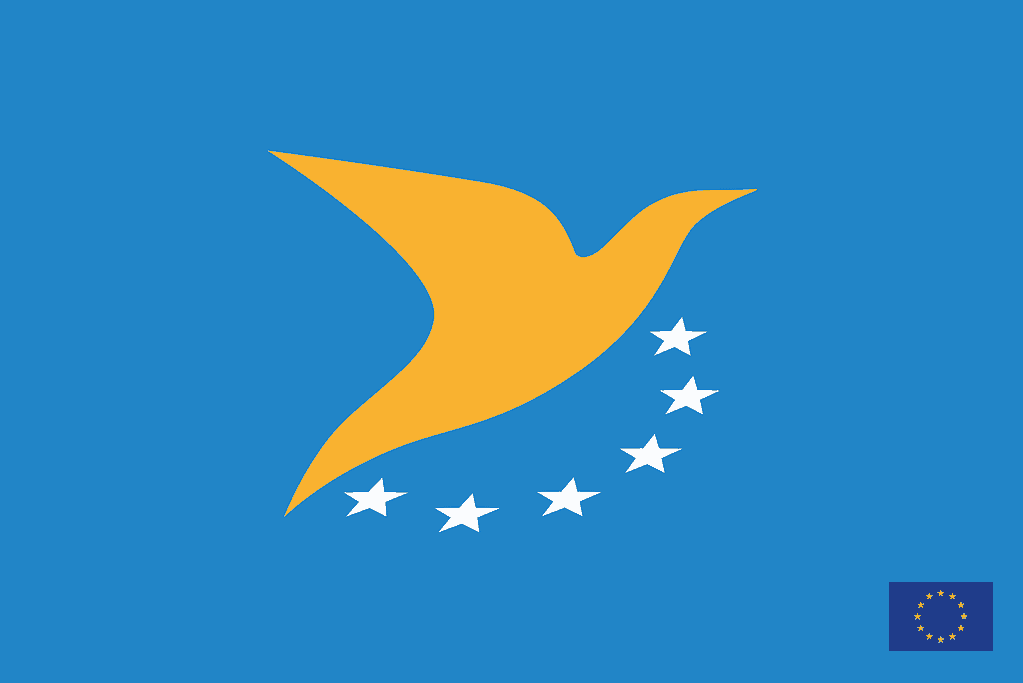Drone Laws in Niger
Hobbyist Drone Laws For Residents of Niger
Drone Operations in Niger are currently regulated.
- Hobbyist drone flights are allowed in Niger
- Hobbyist Niger drone pilot license is not required
- Hobbyist Drone registration/authorization is required in Niger for hobbyists
- Drone Remote ID is not required in Niger for hobbyists
- Drone Insurance is not required but recommended for hobbyists’ drone operations in Niger
Read below for more details on Hobbyist Drone Laws in Niger and to find links to regulators and other credible sources!
Agencies Responsible for regulating drones in the Republic of the Niger
Drone Regulator in Niger: Agence Nationale de l’Avation Civile (ANAC) du NIger
Link to Niger Drone Laws: Niger Drone Regulations
UAS Laws – General rules for flying drones in Niger
The Niger agency responsible for drone safety, ANAC, has provided several internet-accessible details on flying for fun or work. The highlights are enumerated below. For more details, go to the link above.
Are drones allowed in Niger?
Here are the most important rules to know for flying a drone in Niger:
RPAS IDENTIFICATION OBLIGATION
Privileges and identification conditions
No one should operate an RPAS in Niger if the Authority has not identified it and issued an identification number to its owner, legal representative, or operator.
A remotely piloted aircraft is entered into the Niger RPAS identification register when identified per the law.
A remotely piloted aircraft is eligible for identification if it belongs:
- to a citizen of Niger or any foreign person residing in Niger and having at least eighteen (18) years of age on the date of submission of the application; or
- to a company incorporated under the laws of Niger.
Identification certificate
If the request meets the identification requirements, the Authority registers the remotely piloted aircraft and issues a certificate to the applicant.
Identification markings must be displayed on the remotely piloted aircraft and legible.
COMPLIANCE WITH LAWS, REGULATIONS, AND PROCEDURES
- Remotely piloted aircraft must be operated in such a way as to present the least possible danger to persons, property, or other aircraft.
- A remotely piloted aircraft, identified in Nigerand whose operator is domiciled there, may carry out flights over Niger territory.
- An operator must arrange for when a situation puts air traffic in danger during operation. The remote pilot ends the flight as soon as the conditions allowing the flight to be stopped safely are met:
- During all phases of the flight, the remote pilot ensures that the RPA maintains continuous command and control and, if necessary, implements, without delay, the procedures established in case of link loss.
- The aircraft ‘performs a flight only if the meteorological conditions along the route are clear.
- All remotely piloted aircraft operations must be carried out between the official hours of sunrise and sunset (day only).
- Night operations are prohibited except with special authorization from the Authority.
- When operating a remotely piloted aircraft, the remote pilot must maintain visual contact with the remotely piloted aircraft to:
- Maintain operational control of the remotely piloted aircraft.
- Constantly know the position of the remotely piloted aircraft.
- Determine the behavior, altitude, and direction of the remotely piloted aircraft.
- Monitor the airspace for the presence of other aircraft or hazards, and
- Ensure that the remotely piloted aircraft does not constitute a danger to the life or property of others.
- The remote pilot and/or the RPA observer must remain vigilant to detect and avoid any risk of conflict with other crewed aircraft and give priority of passage to these in such a way so that there is no risk of conflict.
- No person shall operate a remotely piloted aircraft in the vicinity of another aircraft in such a way as to create a risk of collision or collision.
- Remotely piloted aircraft shall not be operated in controlled airspace unless the operator has received authorization from the air traffic services.
- Anyone operating a remotely piloted aircraft must ensure that the traffic services aircraft are notified immediately when the remotely piloted aircraft inadvertently enters controlled airspace.
- The remote pilot flying in uncontrolled airspace must inform the nearest air traffic control station before, during, and after each operation.
- No one shall operate a remotely piloted aircraft in a special status space unless this person has obtained authorization from the competent Authority in charge of said space.
- Remotely piloted aircraft must not fly over military installations except with the consent of competent authorities.
- Unless expressly authorized by the Authority, no one may operate an RPAS in the vicinity:
- Within a radius of 10 km around the reference point of an aerodrome.
- Take-off and approach paths.
- Navigation aids.
- The aerodrome circuit.
Notes for recreational drone pilots flying for fun in Niger
This applies to remotely piloted aircraft not exceeding 25 kg and used for recreational purposes.
The remote pilot must fly his remotely piloted aircraft:
- At a maximum altitude of 90 m.
- at least 30 m from vehicles, boats, and the public, if the remotely piloted aircraft weighs more than 250 g but does not exceed 1 kg
- at least 76 m from vehicles, boats, and the public, if the remotely piloted aircraft weighs more than 1 kg but does not exceed 25 kg
- at least 5.6 km from aerodromes (any airport or any place used for take-off or landing of aircraft);
- at least 1.9 km from helipads or aerodromes used only by helicopters outside controlled or restricted airspace
- at least 9 km from a natural hazard or disaster area.
- away from areas where its use could interfere with the work of police officers or first responders
- during the day and never in the clouds.
- By keeping it in his field of vision.
- Within a radius of 500 m or less from the remote pilot.
- only if the name, address, and telephone number are visible on the device.
Follow the general rules listed above, but check for updates by visiting the regulator’s links provided.
Commercial Drone Laws For Residents of Niger
Drone Operations in Niger are currently regulated.
- Commercial drone flights are allowed in Niger
- Commercial Niger drone pilot license is not required
- Commercial Drone registration/authorization is required in Niger for commercial drone operators
- Drone Remote ID is not required in Niger for Commercial Drone Operators
- Drone Insurance is not required for commercial drone operations in Niger
Read below for more details on Commercial Drone Laws in Niger and to find links to regulators and other credible sources!
Notes for operating Commercial Drone Services in Niger
Applies to remotely piloted aircraft not exceeding 25 kg and used for commercial purposes.
Flights must be authorized by ANAC.
The remote pilot must fly his remotely piloted aircraft:
- at a maximum altitude of 90 m.
- at least 30 m from vehicles, boats, and the public, if the remotely piloted aircraft weighs more than 250 g but does not exceed 1 kg
- at least 76 m from vehicles, boats, and the public, if the remotely piloted aircraft weighs more than 1 kg but does not exceed 25 kg
- at least 5.6 km from aerodromes (any airport or any place used for take-off or landing of aircraft);
- at least 1.9 km from helipads or aerodromes used only by helicopters outside controlled or restricted airspace
- at least 9 km from a natural hazard or disaster area.
- away from areas where its use could interfere with the work of police officers or first responders
- during the day and never in the clouds.
- by keeping it in his field of vision.
- within a radius of 500 m or less from the remote pilot
- only if the name, address, and telephone number are visible on the device.
The remote pilot must receive ANAC authorization for any flights outside of the above restrictions.
Follow the general rules listed above, but check for updates by visiting the regulator’s links provided.
See the general rules above.
Drone Regulations For Visitors To Niger
Drone Operations in Niger are currently regulated.
- Foreign visitor drone flights are allowed in Niger
- Foreign visitor drone pilot license is not required
- Drone registration/authorization is required in Niger for visitors/tourists
- Drone Remote ID is not required in Niger for tourists
- Drone Insurance is not required but recommended for tourist drone operations in Niger
Read below for more details on Drone Laws in Niger for Visitors (Tourists) and to find links to regulators and other credible sources!
Drone Rules For Government Drone Operators in Niger
Drone Operations in Niger are currently regulated.
- Government drone flights are allowed in Niger
- Government drone pilot license is required
- Drone registration is required in Niger for Government operations
- Drone Remote ID is not required in Niger for Government operations
- Drone Insurance is not required for Government drone operations in Niger
Read below for more details on Drone Laws Niger for Government Drone Operations and to find links to regulators and other credible sources!
Useful published information on flying drones in Niger
Here is a sample of what you might expect if you follow the drone laws and fly in Niger…
Authoritative Sources of Information on Niger Drone Laws
We will attempt to keep an updated list of online authoritative links to regulators and other official websites here:
- Drone Regulator Website: Agence Nationale de l’Avation Civile (ANAC) du NIger
- Link To SUAS Laws: Niger Drone Regulations
- No Fly Zone Maps/Locations: N/A
- UAV Registration Site: N/A
- Drone Operator Licensing Site: N/A
- Others: N/A
NOTE: This page is about the Regulation of Unmanned Aerial Vehicles: Small Unmanned Aerial Systems (SUAS), Small UAS, Remote Piloted Aerial Systems (RPAS), unmanned aerial vehicle (UAV), Unmanned Aerial System (UAS), and drone are interchangeable terms unless specified. Model Aircraft, toy, remote-controlled, and RC aircraft may be covered by the same regulations unless specified.
Find out why
We think you must use a Drone Preflight Checklist
And a Drone Post-flight checklist
Free Drone Flight Checklist PDF
This Drone Flight Checklist is better than others.
It’s free!
It includes both the preflight checklist and post-flight checklist
It’s an easy-to-use printable PDF that covers all your bases.
Traveling with a Drone?
Click here to read our Comprehensive Guide For Traveling With A Drone.
LET US CONNECT YOU
Calling All Drone Service Companies, Trainers, Tour Guides with Drone Experience
Contact Us with your website, email address and phone number using our Contact Page
We want to share your information with visitors who look for credible providers that follow the rules.
NOW IT’S YOUR TURN





Leave a Comment